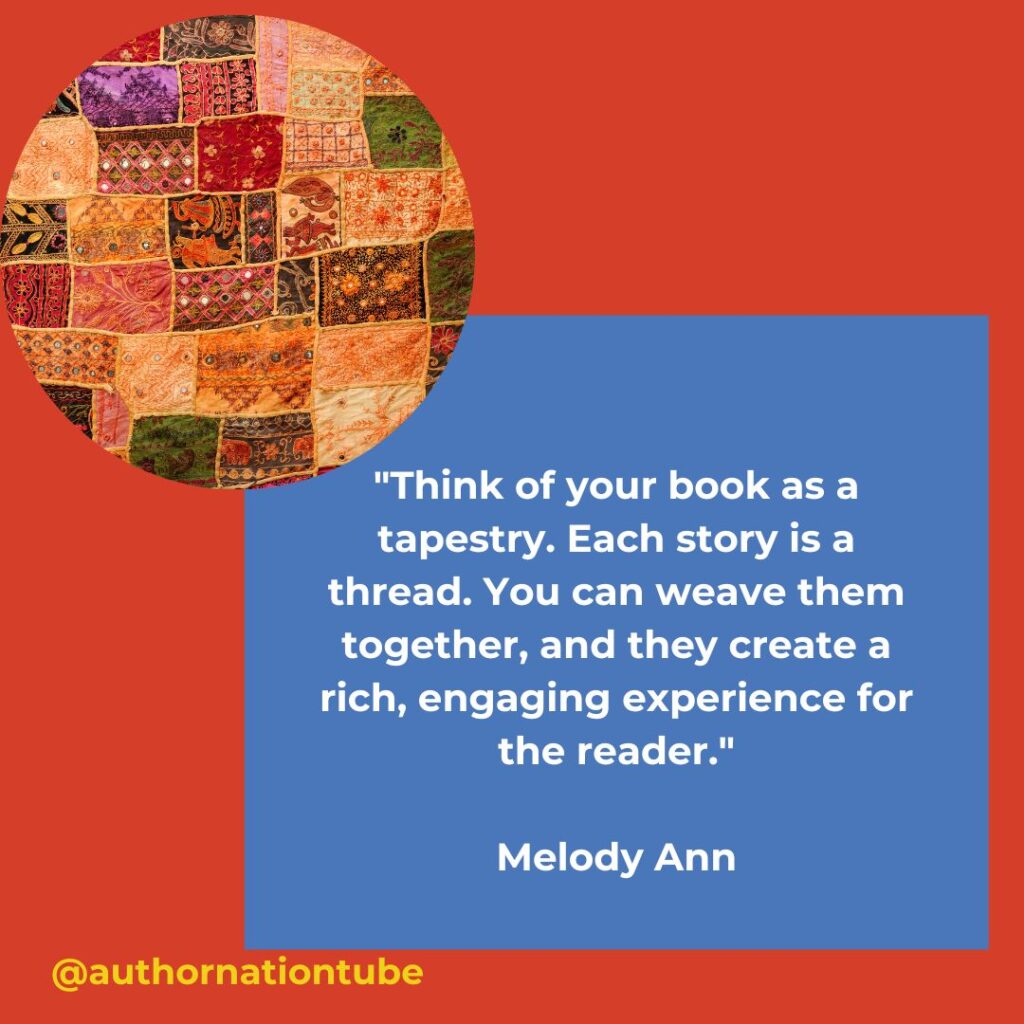Have you ever read a non-fiction book that felt effortless—one that pulled you in with every chapter, making it impossible to put down? Chances are, that author mastered the art of balancing stories and message in books, seamlessly blending their main message.
But how do you achieve this in your own book? How do you make your writing both informative and compelling?
Let’s break it down.
Utilizing The Art of Balancing Stories and Message in Books for Maximum Impact
Think of your book as a tapestry—each story is a thread. When woven together correctly, they create a rich, immersive experience for the reader. Knowing the art of balancing stories and message in books can serve multiple purposes:
- Illustrating key points – Real-world examples make concepts more tangible and easier to grasp.
- Building emotional connections – Readers engage more deeply when they relate to personal experiences.
- Creating continuity – Returning to a story later in the book can show progress and resolution.
Brené Brown, for example, excels at using personal stories to make her research on vulnerability feel deeply relatable. By sharing her own experiences, she gives her audience permission to admit their own vulnerabilities, making her message even more powerful.
Using Real-World Examples to Strengthen Your Book
To illustrate the art of balancing stories and message in books, in your book, consider these strategies:
- Start a chapter with a story – Then revisit it later to add depth or resolution.
- Use different stories to show multiple perspectives – This is particularly useful in topics like parenting or leadership, where diverse viewpoints add richness.
- Avoid story overload – Every story should serve your main message, not distract from it.

Keeping Stories Concise and Relevant for Reader Engagement
Brevity is key. Have you ever read a book where a story drags on, causing you to lose sight of the point? Avoid this by ensuring each story has a clear purpose:
- Does it reinforce your argument?
- Does it provide a fresh perspective?
- Does it keep the reader engaged?
If you’re struggling with brevity, consider six-word stories as an exercise in conciseness. These micro-stories convey complete ideas in just a few words, demonstrating the power of economy in storytelling.
Connecting Stories to Your Message Effectively
Each story should act as a bridge between your ideas. Introduce a concept, use a story to illustrate it, and then tie it back to the main message. This ensures clarity and coherence, preventing your book from feeling disjointed.
Pacing and Emotional Flow: Keeping Readers Hooked
Too many stories, and your reader gets lost. Too few, and your book feels dry. To maintain engagement:
- Vary story length – Mix short anecdotes with longer, immersive narratives.
- Manage emotional highs and lows – If a section is emotionally heavy, follow it with a lighter moment to give the reader breathing room.
Choosing the Right Stories for Maximum Impact
Balancing stories and message isn’t about cramming in as many narratives as possible, nor is it about presenting dry facts with no human connection. It’s about choosing the right stories and using them in the right way.
If you need help refining your stories, consider a coaching session where we evaluate your storytelling techniques and fine-tune them for maximum impact. Check out the link in the description for more details.
By mastering the art of storytelling in your book, you can craft a nonfiction work that is not just informative but truly unforgettable.
Implementing these ideas in your own writing
These ideas will help nonfiction authors transform their books from simply informative to truly engaging. By balancing storytelling with their core message, authors can:
- Make their books more compelling – Readers will stay engaged and retain more information.
- Strengthen their credibility – Real-world examples and personal stories make abstract concepts relatable and persuasive.
- Enhance reader connection – Well-placed narratives create an emotional bond, making the book more impactful and memorable.
3 Actions that will help you balance stories and message in YOUR books:
- Identify a Story to Enhance a Key Point – Pick one chapter in your book and brainstorm a short story or real-world example to illustrate the main idea.
- Write a One-Sentence Summary of a Story’s Purpose – For each story you include, ask yourself: What message does this reinforce? This keeps your stories concise and relevant.
- Review Pacing in One Chapter – Skim a chapter and check if you have a good mix of storytelling and factual content. Adjust if it feels too dense or too sparse.
By applying these small but powerful steps, authors can refine their storytelling and create books that truly resonate with readers!
Keep writing and keep thriving,
Melody Ann
🎁 Want my step-by-step roadmap to success? Download my FREE Guide: From Overwhelmed to Writing here.
More Ideas to Excel your Author Career

Promote Your Book Globally With One Link | How To Use Universal Book Links
What Does It Mean to Promote Your Book Globally With One Link? If you’re still copy-pasting separate links for Amazon, Kobo, Barnes & Noble,

It’s Time To Get Creative With Book Launches | Do Authors Need a Book Launch Party
When it comes to publishing a nonfiction book, it’s time to get creative with book launches. Whether you’re an introverted expert or a bold thought

Why Every Author Needs a Media Kit | How To Create a Press Kit That Gets You Invited To Speak
Why Every Author Needs a Media Kit for Visibility Let’s face it, getting booked on a podcast or featured by a journalist isn’t about
